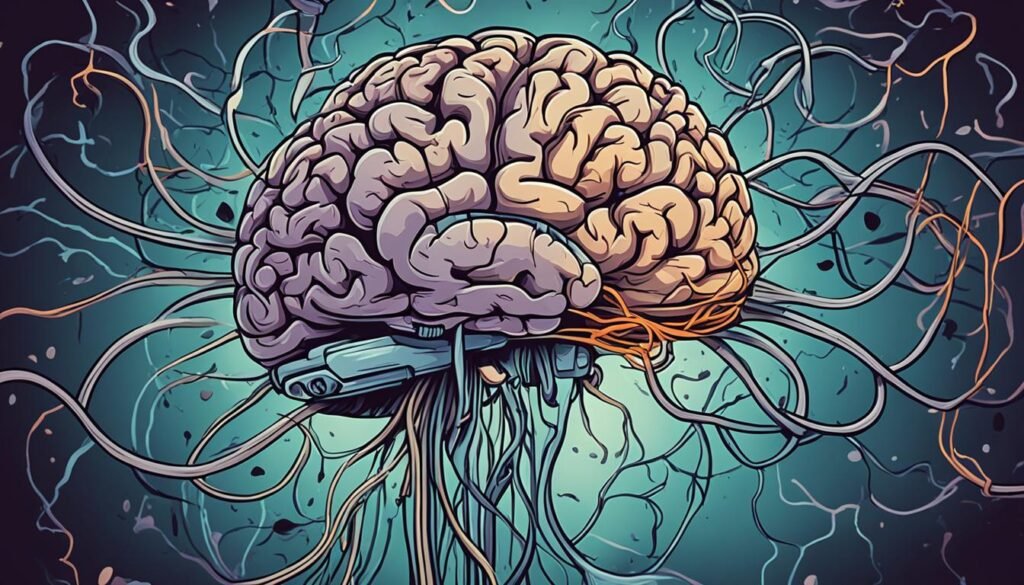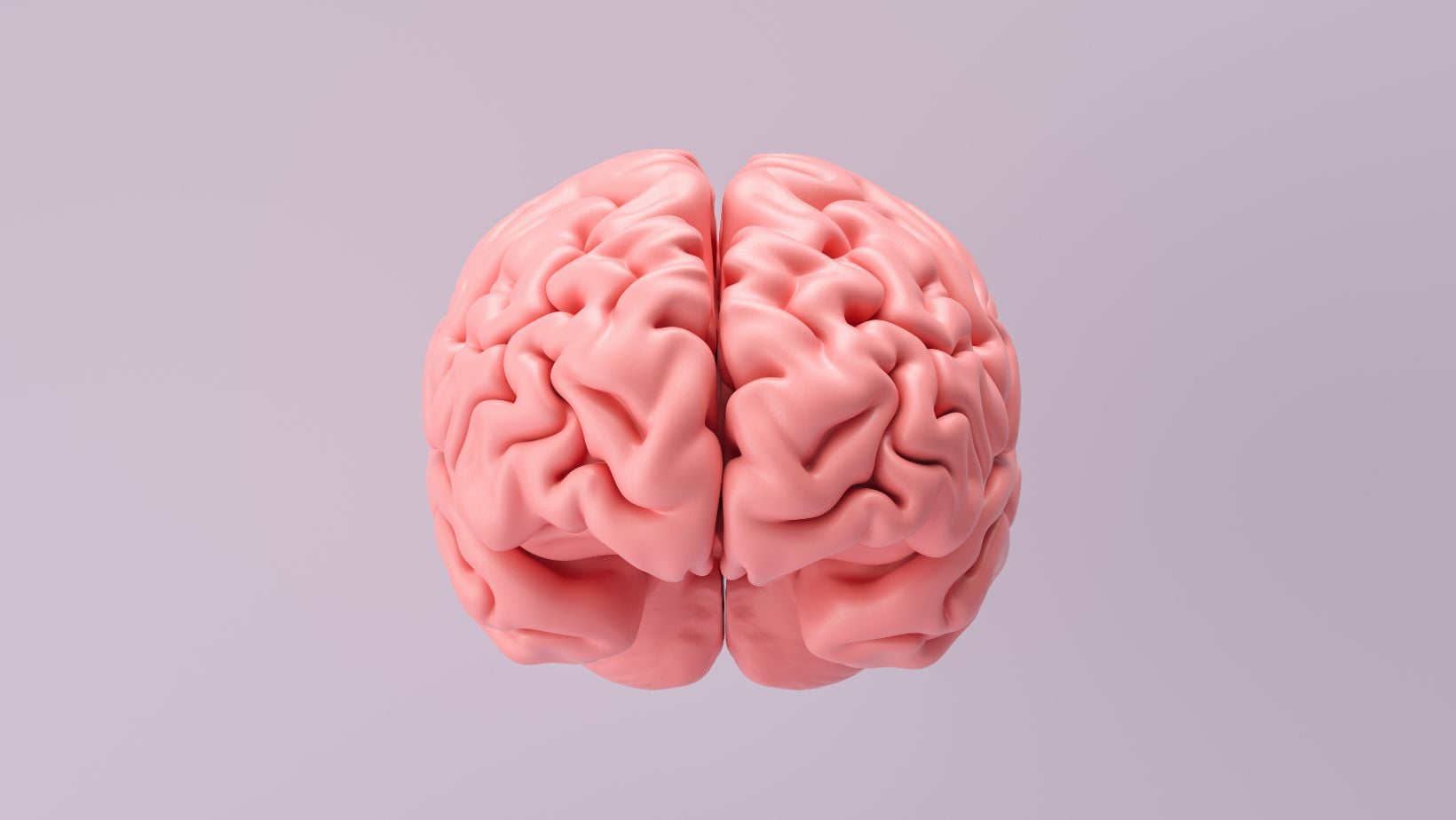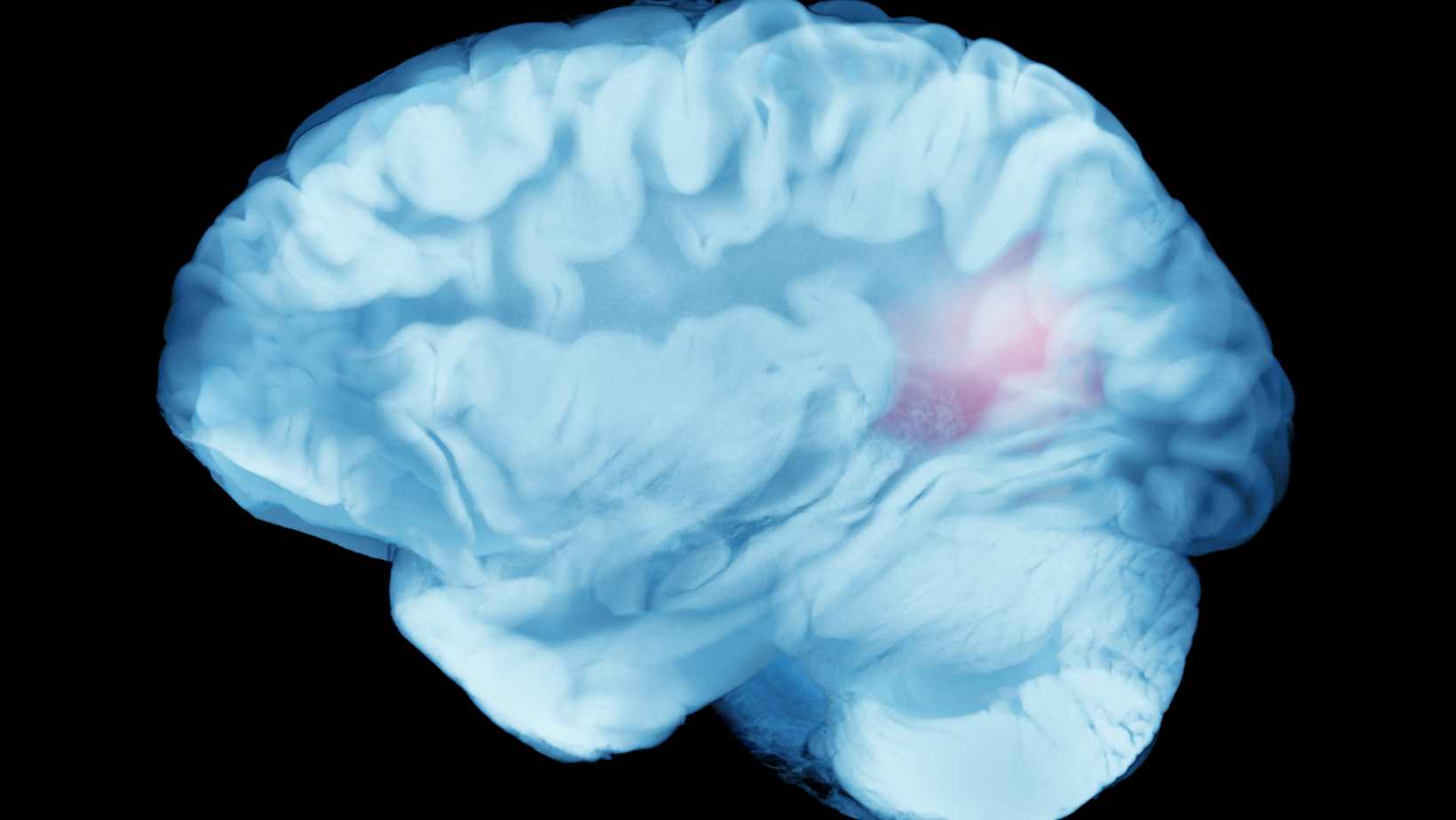Creutzfeldt-Jakob disease (CJD) is a rare brain disorder. It’s caused by abnormal proteins called prions. These prions lead to fast dementia and are always deadly. CJD can start without a clear cause, through family genes, or by exposure to infected tissue.
The disease got special attention because of vCJD. This form can come from eating beef infected with mad cow disease. This means that what we eat could sometimes affect our health.
Only 1 to 2 people out of a million get CJD each year. It differs from more usual forms of dementia like Alzheimer’s. CJD is very quick to get worse, and there is no cure for it.
Table of Contents
ToggleUnderstanding Prions and Their Role in CJD
Prions are special proteins found naturally in our bodies. But, when they fold incorrectly, they can lead to severe brain diseases. These diseases include Creutzfeldt-Jakob disease (CJD).
Usually, proteins fold into shapes that help the body work well. However, if they fold the wrong way, they turn into dangerous prions. The body can’t get rid of these misfolded prions.
The bad prions gather in the brain. There, they make other prions misfold too. This process leads to brain cell death, holes in the brain, and causes CJD symptoms. Unfortunately, prions are hard to destroy and can spread diseases through medical procedures or tissue.
What Are Prions?
Prions are not like viruses or bacteria. They are made only of wrong-folded proteins. They lack typical germs’ ability to replicate on their own. Their danger lies in their ability to turn healthy proteins into dangerous shapes.
How Prions Cause Brain Damage
When prions build up in the brain, they start a harmful chain of events. These prions change healthy proteins into unhealthy ones. The new abnormal proteins then group together. This process damages the brain, killing cells.
With more cells dying, the brain starts to show holes and sponge-like parts. This is unique to prion diseases like CJD. They cause severe and quick brain damage.

Types of Creutzfeldt-Jakob Disease
Creutzfeldt-Jakob disease (CJD) is rare and comes in several types with different causes. Knowing about these types helps in diagnosing and treating the disease right.
Sporadic CJD
The common type is sporadic CJD, seen in about 85% of cases. It happens when the prion protein folds incorrectly, yet we don’t know why. This leads to brain damage and its related symptoms. It can affect anyone, even those without a family history of the disease.
Variant CJD
Variant CJD (vCJD) is rare and very deadly. It comes from eating beef infected with BSE, or “mad cow disease,” in the 1990s. This event caused a serious health scare.
Familial or Inherited CJD
This type makes up 5-10% of CJD cases. It’s caused by a genetic mutation that runs in families. It leads to the creation of harmful prion proteins. If CJD is in your family history, you have a higher chance of getting this form.
Iatrogenic CJD
Iatrogenic CJD makes up less than 1% of cases. It comes from accidental contact with prions, often during medical treatments. Using prion-contaminated tools or some medical products can spread the disease.
Learning about the types of Creutzfeldt-Jakob disease helps us realize how complex and varied this illness is. Despite being rare, it has significant effects on those affected.
Creutzfeldt Jakob Disease and Its Devastating Effects
Creutzfeldt-Jakob disease (CJD) quickly damages the brain, leading to severe symptoms. These symptoms cause a fast decline in both thinking and physical abilities. At first, people might notice changes in how someone acts, forgetfulness, trouble thinking, sight issues, and being uncoordinated.
The condition gets worse with time, leading to extreme memory loss and problems with speaking and eating. Muscle spasms and a complete breakdown in brain function are also signs. CJD leads to a steady loss of brain ability and this progresses without stopping.
This disease moves fast, resulting in the loss of mental and physical functions in a short time. For those with CJD and their families, this is a very difficult journey. It takes away their ability to live independently and, eventually, their life.

Risk Factors for Developing CJD
Most cases of Creutzfeldt-Jakob disease (CJD) happen suddenly for reasons that are unknown. But, there are some risk factors we know about. These can raise the chance of someone getting this rare brain disease.
Age and Genetics
CJD mostly affects older people. The disease often shows up around 60 years of age. Family history and certain genes can also make someone more likely to get CJD. If a family member had it or if you have certain gene changes, your risk is higher.
Exposure to Contaminated Tissue
Coming into contact with infected medical tools or tissue is a risk. This includes getting corneal transplants or dura mater grafts. Using surgery tools that are dirty can also spread CJD. The vCJD form comes from eating beef that had BSE, or “mad cow disease”.
Knowing the things that could raise the risk of CJD is important. It helps people and doctors watch out for signs. By being aware, they can work to lower the risk of getting this serious illness.
Bovine Spongiform Encephalopathy (BSE) and Variant CJD
The variant form of Creutzfeldt-Jakob disease (vCJD) comes from eating beef with BSE prions. This is also known as “mad cow disease”. A 1990s investigation found that infected cattle’s meat-and-bone meal caused the spread to humans through food.
The Link Between BSE and vCJD
There’s a serious health worry about catching BSE from beef products. Studies prove the prions in BSE can lead to vCJD in people. This connection was found in the 1990s. A sharp rise in vCJD cases was linked to eating beef from sick cows.
Preventive Measures and Food Safety Controls
Governments and safety groups have taken steps to stop BSE and vCJD. They banned certain cattle products and improved BSE testing in cows. Rules for meat processing have also gotten stricter. There have been campaigns to teach the public about safe food handling and the dangers of beef from BSE areas.
Transmission and Contagion: Understanding CJD’s Spread
Creutzfeldt-Jakob disease (CJD) is different from diseases like the cold because you can’t catch it from everyday interactions. You won’t get it from a cough, handshake, or even through sex. However, being in contact with infected brain or nervous system tissues can spread the disease. It’s crucial to know how CJD can be passed on to lower the risk of spreading it further.
Blood Transfusion Transmission
CJD has been, in a few cases, passed along by blood transfusions. Even before someone shows symptoms, the blood might have the prion proteins that cause CJD. This happens because the disease can come from medical procedures or handling infected tissues. As a response, many places now check blood donors very carefully, aiming to stop CJD from reaching others through blood.
Medical Procedure Transmission
Getting CJD through medical procedures is also a risk. Prions, which are tough and do not die easily, can stick around on tools used in surgeries. This makes operations involving the brain, cornea transplants, and other similar surgeries a point of concern. To lessen this risk, hospitals follow strict sterilization and infection control guidelines. This aims to reduce any chance of getting the disease during a medical process.
Knowing how CJD spreads is key to stopping it. Staying alert in blood donations and medical treatments is important. And it’s vital to keep learning how to prevent the spread of this challenging illness.
Conclusion
Creutzfeldt-Jakob disease is both rare and tragic, attracting our full attention. Most cases happen by chance, with unknown causes. Yet, we know some things increase the risk, like certain genes, medical history, and diet.
It’s vital we keep learning about CJD for what’s ahead. Understanding prions and the disease’s types is important. This knowledge helps aim for better ways to prevent or find it early. Even though CJD is rare, its harm to the brain is a strong reason for ongoing study and public knowledge.
Working together, we aim to find new breakthroughs and better ways to diagnose. Our goal is to improve how we care for those affected. By being informed and ready, we can hope for a world without the fear of Creutzfeldt-Jakob’s disease.
FAQ
What is Creutzfeldt-Jakob disease (CJD)?
CJD is a very rare brain disease. It’s caused by infectious proteins called prions. It leads to fast dementia and is always deadly.
What causes CJD?
CJD can happen in different ways. It might just appear for no known reason. Or, it can be passed down in families. It’s also linked to eating beef from cows with mad cow disease.
How common is CJD?
CJD is extremely rare. It only affects 1 to 2 people out of every million every year around the world.
What is the role of prions in CJD?
Prions are normal proteins that can become harmful. When they fold the wrong way, they attack the brain. This starts a chain reaction, damaging brain cells and causing CJD symptoms.
What are the different types of CJD?
There are four main types of CJD: sporadic, variant, familial, and iatrogenic forms.
What are the symptoms of CJD?
It starts with small changes like mood swings and memory loss. Then, it causes trouble thinking, seeing, and moving. Finally, the brain stops working completely.
Is CJD contagious?
CJD is not very contagious. It doesn’t spread through the air or by touching. But, it can move to someone else through infected tissues.
What are the risk factors for developing CJD?
Risk factors include age, genes, and certain medical exposures. Eating meat from cows with mad cow disease is a known risk for vCJD.
How is variant CJD (vCJD) related to mad cow disease?
In the 1990s, it was found that eating contaminated beef led to the spread of vCJD. This was through infected meat-and-bone meal in processed foods.
Source Links

This article is medically reviewed by Dr. Chandril Chugh, Board-Certified Neurologist, providing expert insights and reliable health information.
→ Book a consultation to discover which remedies suit your needs best.
About Author | Instagram | YouTube | Linkedin




